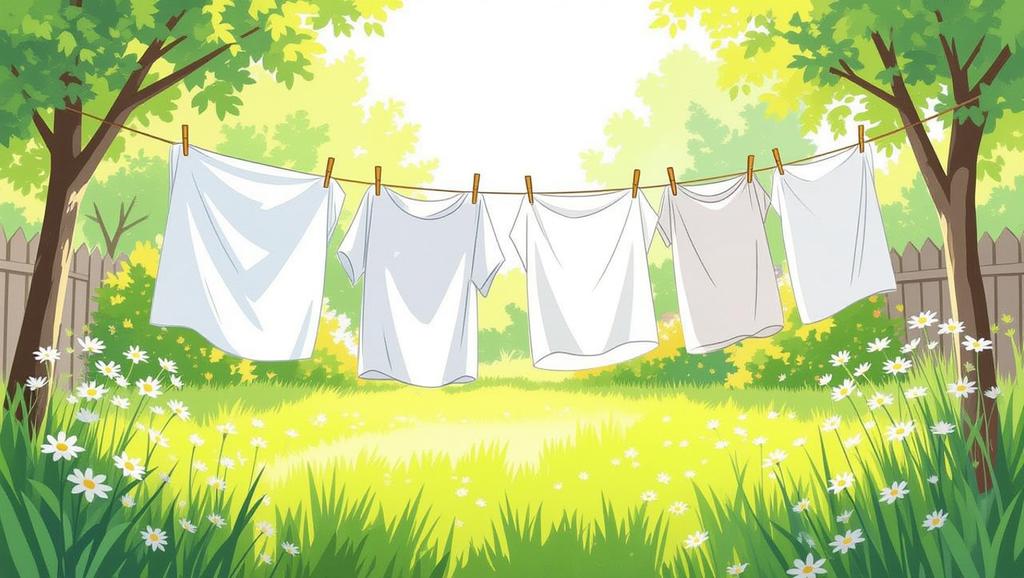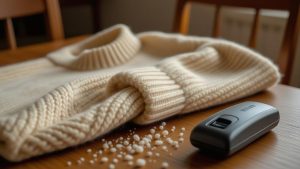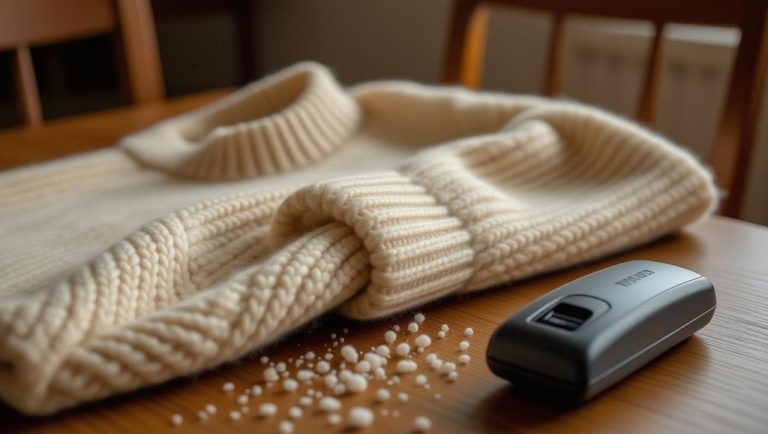Understanding the importance of washing white clothes properly
Washing white clothes can seem like a daunting task because, let’s face it, they tend to show every little stain and speck of dirt more than any other color. But don’t worry, it’s not as hard as you might think! Keeping your white garments bright and fresh is all about understanding the right techniques and using the correct products. The key is to treat your whites with a bit of extra care because they’re more prone to becoming dingy or yellowed over time. I’ve learned over the years that separating whites from other colors is crucial to prevent any color bleeding, which can be a real nightmare. Plus, using the right water temperature and detergents can make a huge difference in maintaining that crisp, clean look. So, whether it’s your favorite white tee or a crisp white shirt for work, knowing how to wash them properly can extend their life and keep them looking their best.

When you think about it, white clothes are a staple in everyone’s wardrobe. They’re versatile, stylish, and can make any outfit pop. But they also require a bit more attention when it comes to laundry day. Over the years, I’ve picked up a few tricks that have helped me keep my whites looking as good as new. One of the most important things I’ve learned is to always check the care labels on your clothes. They can give you specific instructions that can save you from a laundry disaster. Also, keeping your whites separate from other colors is a must. I’ve had my fair share of pink shirts because I didn’t separate my laundry properly!
Preparing your white clothes for washing
Before you even think about tossing your white clothes into the washing machine, there’s some prep work to be done. First off, always check your garments for stains. Treating stains before washing can make a world of difference. I usually use a stain remover or a bit of dish soap to tackle any spots I find. Another tip I swear by is to turn your whites inside out before washing. This helps protect the fabric and prevent any pilling or wear on the outside. And don’t forget to empty pockets and close zippers and buttons to avoid any snags or damage during the wash.
Once you’ve checked for stains and turned your clothes inside out, it’s time to sort them. I like to separate my whites into two piles: heavily soiled items and lightly soiled ones. The heavily soiled items might need a pre-soak or a bit more detergent to get them clean. I’ve found that soaking them in a mixture of water and oxygen bleach for about an hour can work wonders. For the lightly soiled items, a regular wash cycle usually does the trick. And remember, never mix your whites with other colors. It’s a recipe for disaster!
Choosing the right detergent for white clothes
When it comes to choosing the right detergent for your white clothes, it’s all about finding one that’s tough on stains but gentle on fabrics. I’ve tried a lot of different detergents over the years, and I’ve found that those with bleach alternatives or enzymes work best for whites. These ingredients help break down stains and keep your clothes looking bright without damaging the fabric. I usually go for a liquid detergent because it dissolves better in water and can penetrate stains more effectively.
Another thing to consider is the scent of the detergent. While I love a good-smelling laundry, some scents can actually leave residues on your clothes that can make them look dingy over time. So, I opt for unscented or lightly scented detergents to keep my whites looking their best. And don’t forget about laundry boosters! Adding a booster like Borax or oxygen bleach can give your detergent an extra kick and help maintain the whiteness of your clothes.
Selecting the appropriate water temperature
The water temperature you use when washing your white clothes can make a big difference in how they turn out. I’ve learned that hot water is best for heavily soiled whites because it can help break down oils and stains more effectively. But be careful, because hot water can also cause some fabrics to shrink or fade. For most whites, I stick with warm water. It’s a good middle ground that can clean your clothes without causing any damage.
If you’re dealing with delicate fabrics or lightly soiled items, cold water is the way to go. It’s gentler on your clothes and can help prevent any color loss. Plus, washing in cold water can save you money on your energy bill! I usually use cold water for things like white t-shirts or underwear that don’t get too dirty. And remember, always check the care label on your clothes to make sure you’re using the right water temperature for each item.
Using bleach safely and effectively
Bleach can be a powerful tool in keeping your white clothes bright, but it needs to be used carefully. I’ve had my share of bleach disasters, so I’ve learned a few tricks to use it safely and effectively. First off, always use bleach in a well-ventilated area because the fumes can be strong. And never mix bleach with other cleaning products, as it can create harmful gases.
When it comes to using bleach on your whites, I recommend using oxygen bleach instead of chlorine bleach. Oxygen bleach is gentler on fabrics and won’t cause any yellowing or damage. I usually add it to the wash along with my detergent and let it do its magic. For stubborn stains, I’ll sometimes soak my whites in a solution of water and oxygen bleach for about an hour before washing. Just make sure to follow the instructions on the bleach bottle to avoid any mishaps.
The role of fabric softeners in maintaining brightness
Fabric softeners can be a bit of a double-edged sword when it comes to washing white clothes. On one hand, they can make your clothes feel softer and smell great. But on the other hand, they can leave residues on your clothes that can make them look dingy over time. I’ve found that using fabric softeners sparingly can help maintain the brightness of my whites without causing any buildup.
If you do decide to use fabric softener, I recommend using a product specifically designed for whites. These products are usually formulated to help keep your clothes looking bright and fresh. And always follow the instructions on the bottle to avoid using too much. I usually add fabric softener to the rinse cycle and let it do its thing. But if you notice your whites starting to look dull, it might be time to skip the fabric softener for a few washes and see if that helps.
Washing white clothes by hand vs. using a washing machine
When it comes to washing white clothes, you have two main options: washing by hand or using a washing machine. Both methods have their pros and cons, so it really depends on what works best for you. I usually wash my delicate whites by hand because it gives me more control over the process and helps prevent any damage. I fill a basin with warm water and add a bit of detergent, then gently swish the clothes around and let them soak for a bit before rinsing.
For most of my whites, though, I use the washing machine. It’s quick, easy, and does a great job of getting my clothes clean. I just make sure to use the right settings and add any necessary boosters or detergents. One thing I’ve learned is to never overload the machine because it can prevent your clothes from getting clean. And always use the extra rinse cycle if your machine has one to make sure all the detergent is washed out.
Drying white clothes to preserve their color
Drying your white clothes properly is just as important as washing them if you want to keep them looking bright. I’ve found that line-drying my whites outside in the sun can work wonders. The sun acts as a natural bleach and can help keep your clothes looking their best. Just make sure to turn them inside out to prevent any fading from the sun’s rays.
If you don’t have the option to line-dry, using a dryer is fine, but be careful not to over-dry your clothes. Over-drying can cause your whites to become stiff and lose their brightness. I usually use a low heat setting and take my clothes out while they’re still slightly damp. Then, I’ll hang them up to finish drying. And if you’re dealing with delicate fabrics, consider using a drying rack instead of a dryer to prevent any damage.
Ironing white clothes without causing damage
Ironing white clothes can be a bit tricky because you want to keep them looking crisp without causing any damage. I’ve learned that using the right temperature setting on your iron is key. For most whites, a medium heat setting works well. But always check the care label on your clothes to make sure you’re using the right temperature for each item.
Another tip I swear by is to use a pressing cloth when ironing delicate fabrics. This helps protect the fabric from any direct heat and prevents any shine or scorch marks. I usually dampen the pressing cloth with water to help steam out any wrinkles. And don’t forget to iron your whites inside out to prevent any shine or wear on the outside. With a bit of care, you can keep your whites looking crisp and fresh.
Storing white clothes to keep them bright
Storing your white clothes properly is crucial if you want to keep them looking their best. I’ve learned that avoiding plastic storage containers is a must because they can trap moisture and cause yellowing. Instead, I use breathable storage bags or bins made of linen or cotton. These materials allow air to circulate and help prevent any damage to your clothes.
Another tip I’ve picked up is to always clean your whites before storing them. Stains, even invisible ones, can set in over time and ruin the look of your clothes. I usually give my whites a quick wash before putting them away for the season. And if you’re storing delicate items like wedding dresses or baby clothes, consider wrapping them in archival tissue paper. This can help protect them from light, dust, and moisture and keep them looking their best for years to come.
Common mistakes to avoid when washing white clothes
Over the years, I’ve made my fair share of mistakes when washing white clothes. One of the biggest mistakes I’ve made is using too much detergent. It might seem like more detergent would mean cleaner clothes, but it can actually leave residues that make your whites look dingy. I’ve learned to stick to the recommended amount on the detergent bottle and use an extra rinse cycle to make sure all the suds are washed out.
Another common mistake is washing whites with colored clothes. I’ve had my whites turn pink or gray because I didn’t separate my laundry properly. Always wash your whites separately to prevent any color bleeding. And don’t forget to treat stains before washing. I’ve had stains set in because I didn’t treat them right away, so now I make sure to tackle any spots as soon as I notice them.
Special tips for washing specific types of white fabrics
Different types of white fabrics can require different care, so it’s important to know how to wash each one properly. For cotton whites, I’ve found that using a hot water wash and adding a whitening booster like oxygen bleach can help keep them looking bright. But be careful with cotton because it can shrink in hot water, so always check the care label first.
For delicate fabrics like silk or lace, I usually wash them by hand in cold water with a gentle detergent. I gently swish them around and let them soak for a bit before rinsing. And for synthetic fabrics like polyester, a warm water wash with a regular detergent usually does the trick. Just make sure to use a low heat setting when drying to prevent any melting or damage.
Read more 15 genius fashion hacks every woman should know
When it comes to linen whites, I’ve learned that they can be a bit tricky. Linen can wrinkle easily, so I usually use a gentle cycle and hang them up to dry. And for wool whites, I always use a wool-specific detergent and wash them on a delicate cycle. Wool can shrink and felt if not washed properly, so it’s important to follow the care instructions carefully.
How often should you wash your white clothes?
How often you should wash your white clothes can depend on a few factors, like how often you wear them and how dirty they get. I usually wash my white clothes after every wear because they tend to show stains and dirt more easily than other colors. But if you’re wearing them for a short time and they’re not too dirty, you might be able to get away with washing them every other wear.
For items like white jeans or white hoodies, I try to wash them after every two to three wears. These items tend to get less dirty than things like white t-shirts or underwear, so they can go a bit longer between washes. And don’t forget to check your clothes for stains before washing. Treating stains right away can help prevent them from setting in and ruining your whites.
Dealing with stains on white clothes
Stains on white clothes can be a real pain, but there are a few tricks I’ve learned to deal with them. For greasy stains like oil or butter, I usually pretreat them with a bit of dish soap or liquid detergent. I gently rub the soap into the stain with a clean toothbrush and let it sit for a few minutes before washing. This helps break down the grease and get the stain out.
For colored stains like coffee or juice, I use a bit of undiluted oxygen bleach. I apply it directly to the stain and let it sit for a few minutes before washing. This helps lift the color and prevent any staining. And for stubborn stains like grass or wine, I’ll sometimes soak my whites in a solution of water and oxygen bleach for about an hour before washing. Just make sure to follow the instructions on the bleach bottle to avoid any damage.
Natural remedies to brighten white clothes
If you’re looking for natural ways to brighten your white clothes, there are a few remedies I’ve found that work well. One of my favorites is using baking soda. I’ll add about half a cup of baking soda to my wash along with my detergent. It helps boost the cleaning power of the detergent and can help keep your whites looking bright.
Another natural remedy I swear by is using lemon juice. I’ll sometimes soak my whites in a solution of water and lemon juice for about an hour before washing. The citric acid in the lemon juice can help break down stains and brighten your clothes. And for a more old-fashioned approach, I’ve found that using bluing can work wonders. Bluing is a product that adds a tint of blue to your whites, which can help counteract any yellowing and make them look brighter.
When to seek professional cleaning services for white clothes
Sometimes, no matter how hard you try, your white clothes might need a bit of professional help. If you’re dealing with stubborn stains that just won’t come out, or if your whites are looking dingy no matter what you do, it might be time to take them to a professional cleaner. They have the tools and expertise to tackle even the toughest stains and can help restore your whites to their original brightness.
Another time to seek professional cleaning services is if you’re dealing with delicate or expensive items. Things like wedding dresses or silk blouses might need special care that you can’t provide at home. A professional cleaner can help ensure these items are cleaned properly without causing any damage. And if you’re unsure about how to wash a particular item, it’s always better to be safe and take it to a professional rather than risk ruining it.
Conclusion: Keeping your white clothes bright and fresh
Keeping your white clothes bright and fresh might seem like a challenge, but with the right techniques and products, it’s totally doable. I’ve learned that treating stains as soon as they happen, using the right detergent and water temperature, and drying and storing your clothes properly can make a huge difference. And don’t forget about those natural remedies like baking soda and lemon juice! They can help keep your whites looking their best without any harsh chemicals.

At the end of the day, it’s all about taking a bit of extra care with your whites. They might require a bit more attention than other colors, but the payoff is worth it. With these tips and tricks, you can keep your white clothes looking as good as new for years to come. So, the next time you’re doing laundry, remember to give your whites the love and care they deserve. Your wardrobe will thank you!













